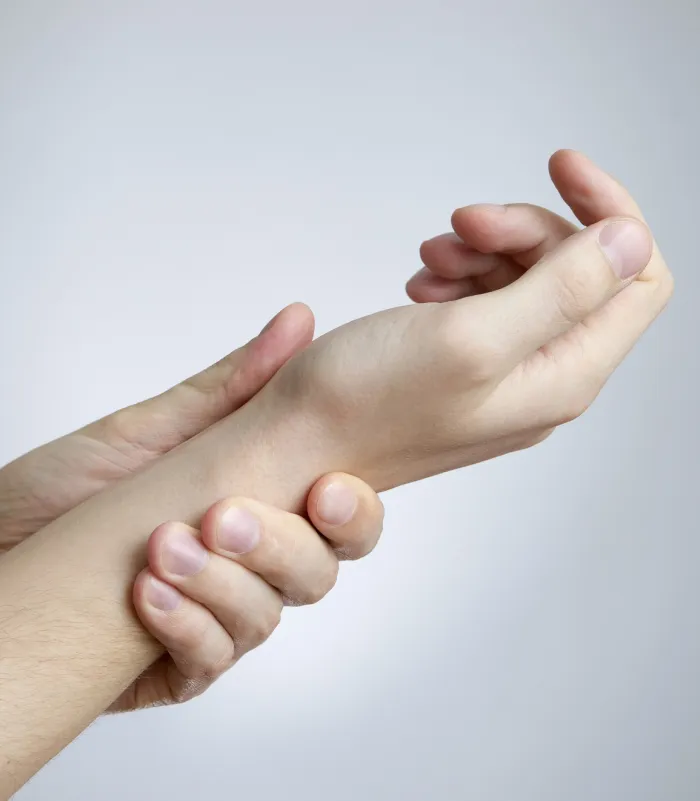
Hand & Wrist

The hand and wrist provide the body with the flexibility to hold, handle, and control objects. The forearm’s ulna and radius bones support the muscles that manipulate the bones of the hand and wrist. The rotating of the radius around the ulna results in the supination and pronation of the hand. This gives the hand a broad range of motion.
The human hand consists of a broad palm, the metacarpus, with 5 digits attached to the forearm by a joint called the wrist, or carpus. The back of the hand is formally called the dorsum of the hand. The hand is made up of 27 bones and contains 14 digital bones, also called phalanges: two in the thumb and three in each of the four fingers.
There are eight small carpal bones in the wrist called the carpus. The carpus is slightly concave and forms a canal known as the carpal tunnel through which tendons, ligaments, and nerves extend into the palm. This joins with the metacarpal bones and ligaments. The five metacarpal bones of the palm extend from the carpus to each of the digits of the hand. The phalange bones form hinge joints between each other. The forearm muscles flex and extend the phalanges by tendons that run through the wrist and hand.








